You are using an out of date browser. It may not display this or other websites correctly.
You should upgrade or use an alternative browser.
You should upgrade or use an alternative browser.
Ground Resitivity Meters
- Thread starter WoodyGA
- Start date
A
Anonymous
Guest
I hven't worked with this type of equip. but would be interested in hearing how your progress is going. Keep us updated!
Deacon
Deacon
Attachments
-
 sf-1.webp32.5 KB · Views: 98
sf-1.webp32.5 KB · Views: 98 -
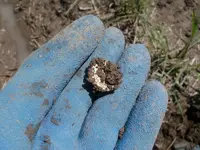 Seated2-1.webp51.2 KB · Views: 87
Seated2-1.webp51.2 KB · Views: 87 -
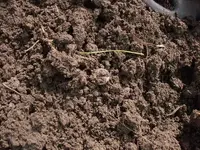 1.webp129.6 KB · Views: 78
1.webp129.6 KB · Views: 78 -
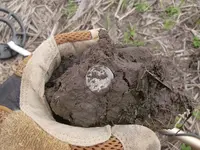 Barber Dime.webp81.8 KB · Views: 90
Barber Dime.webp81.8 KB · Views: 90 -
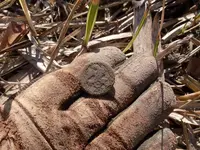 1812 Artillery.webp107 KB · Views: 89
1812 Artillery.webp107 KB · Views: 89 -
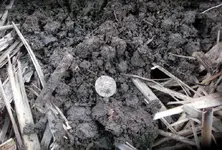 1806 Half Real.webp101.2 KB · Views: 85
1806 Half Real.webp101.2 KB · Views: 85 -
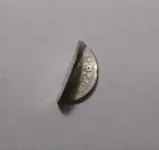 1740 HR taco.webp17.7 KB · Views: 80
1740 HR taco.webp17.7 KB · Views: 80 -
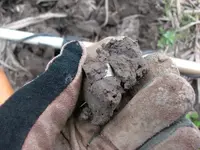 1740 Half Real.webp69 KB · Views: 86
1740 Half Real.webp69 KB · Views: 86 -
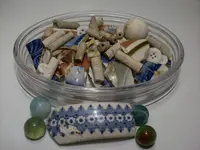 pipestems pottery marbles.webp48.3 KB · Views: 110
pipestems pottery marbles.webp48.3 KB · Views: 110 -
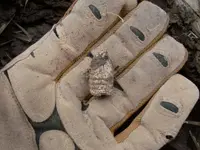 minieball.webp76.8 KB · Views: 79
minieball.webp76.8 KB · Views: 79 -
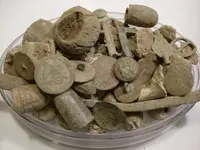 group shot.webp58.3 KB · Views: 74
group shot.webp58.3 KB · Views: 74 -
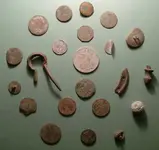 group finds shot.webp41.6 KB · Views: 85
group finds shot.webp41.6 KB · Views: 85 -
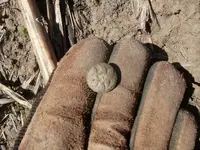 Eagle A Cuff.webp96.8 KB · Views: 77
Eagle A Cuff.webp96.8 KB · Views: 77 -
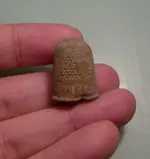 thimble.webp29.3 KB · Views: 66
thimble.webp29.3 KB · Views: 66 -
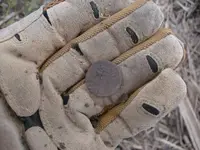 V Nickel 1892.webp73.3 KB · Views: 86
V Nickel 1892.webp73.3 KB · Views: 86 -
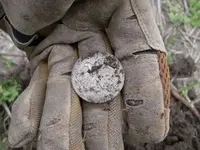 Walker.webp67.1 KB · Views: 84
Walker.webp67.1 KB · Views: 84
L
leafmould
Guest
i have a friend who would love to build a resistivity meter as we,d really like one but are skint (uk for broke) he's a electrical engineer so it would be no problem but where to find the schematics?
phil
phil
WoodyGA
Greenie
- #4
Thread Owner
Carl Moreland has a couple plans at http://www.thunting.com/cgi-bin/geotech/pages/common/index.pl?page=geo&file=projects.dat and the one I built is in this magazine: http://www.epemag.com April and May Issue of this year. Can build for a lot less than you can buy.
pityocamptes
Jr. Member
Woody, any chance you may be able to e-mail me or post what is in the portion of the plans (Part II)? I picked up part I from my news stand and ordered the pc board but when I went to get the second edition (part II) they were all sold out and would not be getting any more. It would be greatly appreciated. By the way I did build the flux gate mag on carl site and it works great. The hardest part is to align the sensors. Also I attached an electrnoic volt meter to the sensor pins which allows me to see any small increases in voltage which would indicate a target. This used with the audio fucntion that it comes with and the optional led that I installed makes for great features. If you need help let me know. Thanks again.
WoodyGA
Greenie
- #6
Thread Owner
You can get the May issue with part 2 online for $5 at www.epemag.com
They let you download the PDF version of the mag after purchase.
My friend has built the mag as well and has not been able to align the sensors at all ... can you offer any advice on alignment and the volt meter and led you added to the plans?
Thanks
They let you download the PDF version of the mag after purchase.
My friend has built the mag as well and has not been able to align the sensors at all ... can you offer any advice on alignment and the volt meter and led you added to the plans?
Thanks
L
leafmould
Guest
testing?
hi woody
got the mag, thanks, my friend is now checking and looking to get the stuff together. hows your testing going? is it an ok option?
cheers, phil
hi woody
got the mag, thanks, my friend is now checking and looking to get the stuff together. hows your testing going? is it an ok option?
cheers, phil
D
dwight traina
Guest
proton mag
Hay guys i dont know if thi will help are no but here gose. i read about this in yhe 1950s they called it a protron mag it was made in germany to be used for archaeologywhat they showed was a prob that had a glass container on top of it with a winding in it coming of of it was 2 leads that went to a metal box that had a meater and 5 knobs on it the way it worked was yoy laid out a grid say 50 or 100 foot squar one person worked the prob the other person worked the box.the knobs could be set for different depth the mech give you a read out being the earth is in layers the mech would show any thing that chang the layer like a large rock a wall are a pot of money the man at the grid work at a right angel to the north poll, all so the glass container had destilled water in it They said the universty of wess. and calif had one. happy hunting
Hay guys i dont know if thi will help are no but here gose. i read about this in yhe 1950s they called it a protron mag it was made in germany to be used for archaeologywhat they showed was a prob that had a glass container on top of it with a winding in it coming of of it was 2 leads that went to a metal box that had a meater and 5 knobs on it the way it worked was yoy laid out a grid say 50 or 100 foot squar one person worked the prob the other person worked the box.the knobs could be set for different depth the mech give you a read out being the earth is in layers the mech would show any thing that chang the layer like a large rock a wall are a pot of money the man at the grid work at a right angel to the north poll, all so the glass container had destilled water in it They said the universty of wess. and calif had one. happy hunting
R
RRey199
Guest
Is that like the flux capacitor in the Dr. Brown's Delorean or is it more like the reflex float valve in the General Lee?
I have truly been educated. TH hi-tech. Makes me wish I was psychic.
I have truly been educated. TH hi-tech. Makes me wish I was psychic.
I'm thinking about building one too. But, in addition, I will add 2 more volt meters, one on each set of probes going into the ground. An electronics law says that the sum of all voltages = the source voltage. You will be able to tell at a glance what you are dealing with.
probe probe probe probe
| | | |
| | | |
. ---VM1--------.------VM2-----.------VM3------.
(Existing)
VM1 + VM2 +VM3 = Batt. voltage.
probe probe probe probe
| | | |
| | | |
. ---VM1--------.------VM2-----.------VM3------.
(Existing)
VM1 + VM2 +VM3 = Batt. voltage.
C
Charles,Oak Island
Guest
Woody, if we could just figure out some way to pull it behind a boat for weck hunting.............





they will not work in sand. will give false readings in overly moist soil and if used around a lot of quartz. otherwise i have no complaints with mine. will find tunnels, caves, covered over not filled in wells with ease. finding your target is a little tricky and will take practice.
ChampFerguson/TN
Bronze Member
Beyond me why anyone would want to watch that freakshow.
99thpercentile
Full Member
- Joined
- Nov 2, 2006
- Messages
- 165
- Reaction score
- 129
- Golden Thread
- 0
- Location
- Evergreen, CO
- Detector(s) used
- Geonics EM61-MK2, Geophex GEM-3, GapEOD UltraTEM III, Minelabs F3, Foerster MINEX 2FD 4.500
- Primary Interest:
- All Treasure Hunting
If cost is your limiting factor and you have lots of time, you can by a functional resistivity meter for cheap. I own probably 10 different resistivity systems ranging from $300 to $70K.
This one is super cheap and can make measurements up to about 20 ft depth.
DUOYI DY4300B 4-Terminal Earth Ground Resistance and Soil Resistivity Tester Meter ~$350
http://www.dyinstrument.com/duoyi/
This one is super cheap and can make measurements up to about 20 ft depth.
DUOYI DY4300B 4-Terminal Earth Ground Resistance and Soil Resistivity Tester Meter ~$350
http://www.dyinstrument.com/duoyi/
Jim in Idaho
Silver Member
- Joined
- Jul 21, 2012
- Messages
- 3,362
- Reaction score
- 4,790
- Golden Thread
- 0
- Location
- Blackfoot, Idaho
- Detector(s) used
- White's GM2, GM3, DFX, Coinmaster, TDI-SL, GM24K, Falcon MD20, old Garrett Masterhunter BFO
'Way Too Cool' dual 18 Watt UV light
- Primary Interest:
- Prospecting
I built a simple one and used it prospecting for a copper lode. Huge amount of work. I just used a simple rectifier, with an inverter to get 90 volts of pulsed DC. Used a simple array, with probes spaced at 5 yard intervals. Back and forth over the ground to read the current and voltage at each pair of probes, and then converted that to get resistance. used a free software to generate an image based on the resistivity. I felt it worked great, but. a lot of effort. The only fly in the ointment was moisture in the soil can look like low resistivity, so you put a lot of effort into digging for what you think may be metallic intrusions, only to find a patch of soil damper than the background. Still, a useful tool that can be fairly easily built with common equipment. Another cheap method is to simply measure the voltage across the probes, with no probes inputting voltage and current into the ground. Just set a couple of probes about 10" into the ground and use a very sensitive voltmeter to measure the voltage across them. Places with higher than normal mineralization will measure a higher voltage in most cases.
Jim
Jim
Jim in Idaho
Silver Member
- Joined
- Jul 21, 2012
- Messages
- 3,362
- Reaction score
- 4,790
- Golden Thread
- 0
- Location
- Blackfoot, Idaho
- Detector(s) used
- White's GM2, GM3, DFX, Coinmaster, TDI-SL, GM24K, Falcon MD20, old Garrett Masterhunter BFO
'Way Too Cool' dual 18 Watt UV light
- Primary Interest:
- Prospecting
Here's an image the software generates, with the resistivity shown in colors. I was doing some initial tests in my pasture to learn how to do it.

99thpercentile
Full Member
- Joined
- Nov 2, 2006
- Messages
- 165
- Reaction score
- 129
- Golden Thread
- 0
- Location
- Evergreen, CO
- Detector(s) used
- Geonics EM61-MK2, Geophex GEM-3, GapEOD UltraTEM III, Minelabs F3, Foerster MINEX 2FD 4.500
- Primary Interest:
- All Treasure Hunting
The method that you are describing to measure voltage between two electrodes is called spontaneous potential (SP) or streaming potential (SP), depending on the source of the signal. You don't want to use metal electrodes for SP surveys because they will polarize, with positive charges collecting at one electrode and negative charges at the other. To properly do an SP survey, you need non-polarizing electrodes. The cheapest of these electrodes are from Tinker-Rasor and use an inner copper electrode surrounded by a copper sulfate solution that is leaking out through a porous ceramic tip. I prefer the sealed lead lead-sulfate versions manufactured by either SDEC in France or the Borin Stelth Non-Polarizing Electrodes manufactured in CA.I built a simple one and used it prospecting for a copper lode. Huge amount of work. I just used a simple rectifier, with an inverter to get 90 volts of pulsed DC. Used a simple array, with probes spaced at 5 yard intervals. Back and forth over the ground to read the current and voltage at each pair of probes, and then converted that to get resistance. used a free software to generate an image based on the resistivity. I felt it worked great, but. a lot of effort. The only fly in the ointment was moisture in the soil can look like low resistivity, so you put a lot of effort into digging for what you think may be metallic intrusions, only to find a patch of soil damper than the background. Still, a useful tool that can be fairly easily built with common equipment. Another cheap method is to simply measure the voltage across the probes, with no probes inputting voltage and current into the ground. Just set a couple of probes about 10" into the ground and use a very sensitive voltmeter to measure the voltage across them. Places with higher than normal mineralization will measure a higher voltage in most cases.
Jim
SP surveys are done to either locate geo batteries in mining, which is a metallic geologic target in a non-metallic host medium where the water table covers part of the target, or to detect flowing water in the subsurface.
Similar threads
- Replies
- 33
- Views
- 2K
- Replies
- 0
- Views
- 454
- Replies
- 51
- Views
- 1K
Users who are viewing this thread
Total: 1 (members: 0, guests: 1)



